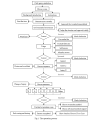A Serious Game for Enhancing Rescue Reasoning Skills in Tactical Combat Casualty Care: Development and Deployment Study
- PMID: 39133911
- PMCID: PMC11347892
- DOI: 10.2196/50817
A Serious Game for Enhancing Rescue Reasoning Skills in Tactical Combat Casualty Care: Development and Deployment Study
Abstract
Background: Serious games (SGs) have emerged as engaging and instructional digital simulation tools that are increasingly being used for military medical training. SGs are often compared with traditional media in terms of learning outcomes, but it remains unclear which of the 2 options is more efficient and better accepted in the process of knowledge acquisition.
Objective: This study aimed to create and test a scenario-based system suitable for enhancing rescue reasoning skills in tactical combat casualty care.
Methods: To evaluate the effectiveness of the SGs, a randomized, observational, comparative trial was conducted. A total of 148 members from mobile medical logistics teams were recruited for training. Pre- and posttraining assessments were conducted using 2 different formats: a video-based online course (n=78) and a game simulation (n=70). We designed 3 evaluation instruments based on the first 2 levels of the Kirkpatrick model (reaction and learning) to measure trainees' satisfaction, knowledge proficiency, and self-confidence.
Results: There were 4 elements that made up the learning path for the SGs: microcourses (video-based online courses), self-test, game simulation, and record query. The knowledge test scores in both groups were significantly higher after the intervention (t154=-6.010 and t138=-7.867, respectively; P<.001). For 5 simulation cases, the average operation time was 13.6 (SD 3.3) minutes, and the average case score was 279.0 (SD 57.6) points (from a possible total of 500 points), with a score rate of only 44% (222/500 points) to 67% (336/500 points). The results indicated no significant difference in trainees' satisfaction between the 2 training methods (P=.04). However, the game simulation method outperformed the video-based online course in terms of learning proficiency (t146=-2.324, P=.02) and self-perception (t146=-5.492, P<.001).
Conclusions: Despite the high satisfaction reported by trainees for both training methods, the game simulation approach demonstrated superior efficiency and acceptance in terms of knowledge acquisition, self-perception, and overall performance. The developed SG holds significant potential as an essential assessment tool for evaluating frontline rescue skills and rescue reasoning in mobile medical logistics teams.
Keywords: combat casualty care; medical education; medical service support; military exercise; simulation training; virtual reality.
©Siyue Zhu, Zenan Li, Ying Sun, Linghui Kong, Ming Yin, Qinge Yong, Yuan Gao. Originally published in JMIR Formative Research (https://formative.jmir.org), 12.08.2024.
Conflict of interest statement
Conflicts of Interest: None declared.
Figures





Similar articles
-
A Serious Game for Massive Training and Assessment of French Soldiers Involved in Forward Combat Casualty Care (3D-SC1): Development and Deployment.JMIR Serious Games. 2016 May 18;4(1):e5. doi: 10.2196/games.5340. JMIR Serious Games. 2016. PMID: 27194369 Free PMC article.
-
Teaching tactical combat casualty care using the TC3 sim game-based simulation: a study to measure training effectiveness.Stud Health Technol Inform. 2010;154:176-9. Stud Health Technol Inform. 2010. PMID: 20543293
-
A Novel Scenario-Based, Mixed-Reality Platform for Training Nontechnical Skills of Battlefield First Aid: Prospective Interventional Study.JMIR Serious Games. 2022 Dec 6;10(4):e40727. doi: 10.2196/40727. JMIR Serious Games. 2022. PMID: 36472903 Free PMC article.
-
Take-Home Training in Laparoscopy.Dan Med J. 2017 Apr;64(4):B5335. Dan Med J. 2017. PMID: 28385174 Review.
-
Virtual reality simulation training for health professions trainees in gastrointestinal endoscopy.Cochrane Database Syst Rev. 2018 Aug 17;8(8):CD008237. doi: 10.1002/14651858.CD008237.pub3. Cochrane Database Syst Rev. 2018. PMID: 30117156 Free PMC article.
References
-
- Hamari J, Shernoff DJ, Rowe E, Coller B, Asbell-Clarke J, Edwards T. Challenging games help students learn: An empirical study on engagement, flow and immersion in game-based learning. Computers in Human Behavior. 2016 Jan;54:170–179. doi: 10.1016/j.chb.2015.07.045. - DOI
-
- Gentry SV, Gauthier A, L'Estrade Ehrstrom B, Wortley D, Lilienthal A, Tudor Car L, Dauwels-Okutsu S, Nikolaou CK, Zary N, Campbell J, Car J. Serious gaming and gamification education in health professions: systematic review. J Med Internet Res. 2019 Mar 28;21(3):e12994. doi: 10.2196/12994. https://www.jmir.org/2019/3/e12994/ v21i3e12994 - DOI - PMC - PubMed
-
- McGrath JL, Taekman JM, Dev P, Danforth DR, Mohan D, Kman N, Crichlow A, Bond WF. Using virtual reality simulation environments to assess competence for emergency medicine learners. Acad Emerg Med. 2018 Feb;25(2):186–195. doi: 10.1111/acem.13308. https://onlinelibrary.wiley.com/doi/10.1111/acem.13308 - DOI - DOI - PubMed
-
- Boada I, Rodriguez Benitez A, Thió-Henestrosa Santiago, Soler J. A serious game on the first-aid procedure in choking scenarios: design and evaluation study. JMIR Serious Games. 2020 Aug 19;8(3):e16655. doi: 10.2196/16655. https://games.jmir.org/2020/3/e16655/ v8i3e16655 - DOI - PMC - PubMed
-
- Ricci S, Calandrino A, Borgonovo G, Chirico M, Casadio M. Viewpoint: virtual and augmented reality in basic and advanced life support training. JMIR Serious Games. 2022 Mar 23;10(1):e28595. doi: 10.2196/28595. https://games.jmir.org/2022/1/e28595/ v10i1e28595 - DOI - PMC - PubMed
LinkOut - more resources
Full Text Sources

